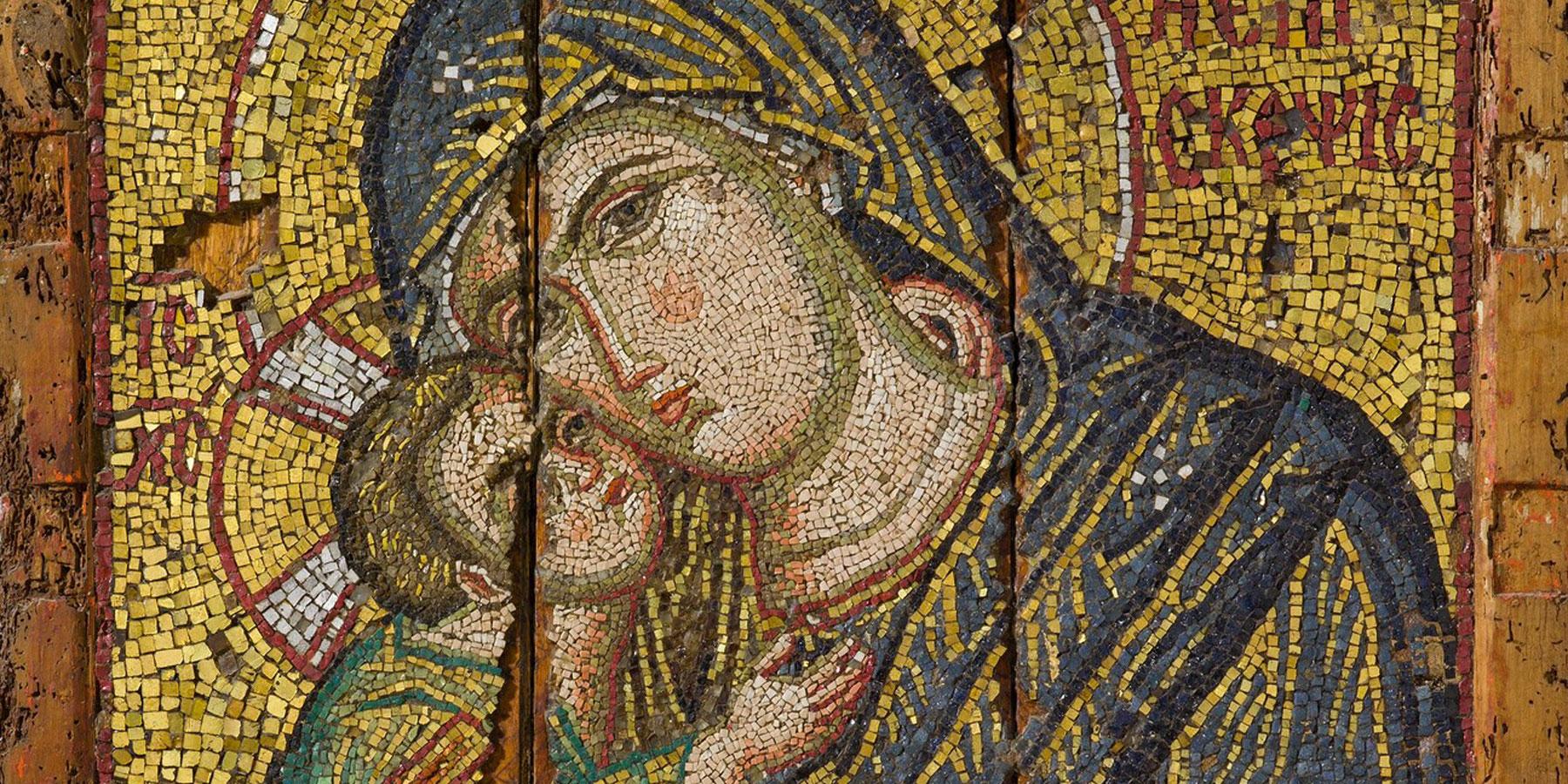Heaven and Earth: Art of Byzantium from Greek Collections
In 324 Emperor Constantine the Great made the momentous decision to move the capital of the Roman Empire from Italy to a strategic location far to the east. The new imperial capital rose on the site of the ancient city of Byzantium on the Bosphorus Strait linking the Aegean and Black Seas. Dedicated in 330 and renamed Constantinople (now Istanbul), the city became the largest and wealthiest in Christendom, dazzling European and Russian visitors. The old name, Byzantium, is used to refer to the Byzantine Empire, which lasted for more than a millennium before falling to the Ottoman Turks in 1453.
The Byzantines called themselves Romaioi (Romans) and Constantinople “New Rome.” It was the seat of a government that perpetuated many Roman administrative and judicial practices. Byzantium was also heir to ancient Greek learning and literature. The most basic component of Byzantine culture was the Christian religion, which profoundly influenced the visual arts and permeated all aspects of life. Church and state were tightly intertwined in a society ruled by an emperor hailed as “Christ’s vice-regent.”
Heaven and Earth: Art of Byzantium from Greek Collections is the first exhibition devoted to Byzantine art at the Gallery. It presents life in Byzantium through approximately 170 works of art dating from the inception of the empire to its close. Drawn from collections throughout Greece, they include sculpture, mosaics, icons, frescoes, manuscripts, metalwork, jewelry, glass, embroideries, coins, and ceramics. The works are arranged in five sections: From the Ancient to the Byzantine World, Spiritual Life, Pleasures of Life, Intellectual Life, and The Last Phase: Crosscurrents.
Banner Image: Mosaic icon of the Virgin Episkepsis, Constantinople, late 13th century, glass, gold, and silver tesserae, Athens, Byzantine and Christian Museum
Five Byzantine Churches
Produced by the Department of Exhibition Programs, this ten-minute film presents original still and moving footage of Byzantine churches in Greece. Set to the music of Byzantine hymns and chants, the film evokes the original context of many objects in the exhibition.
This film was made possible by the HRH Foundation
